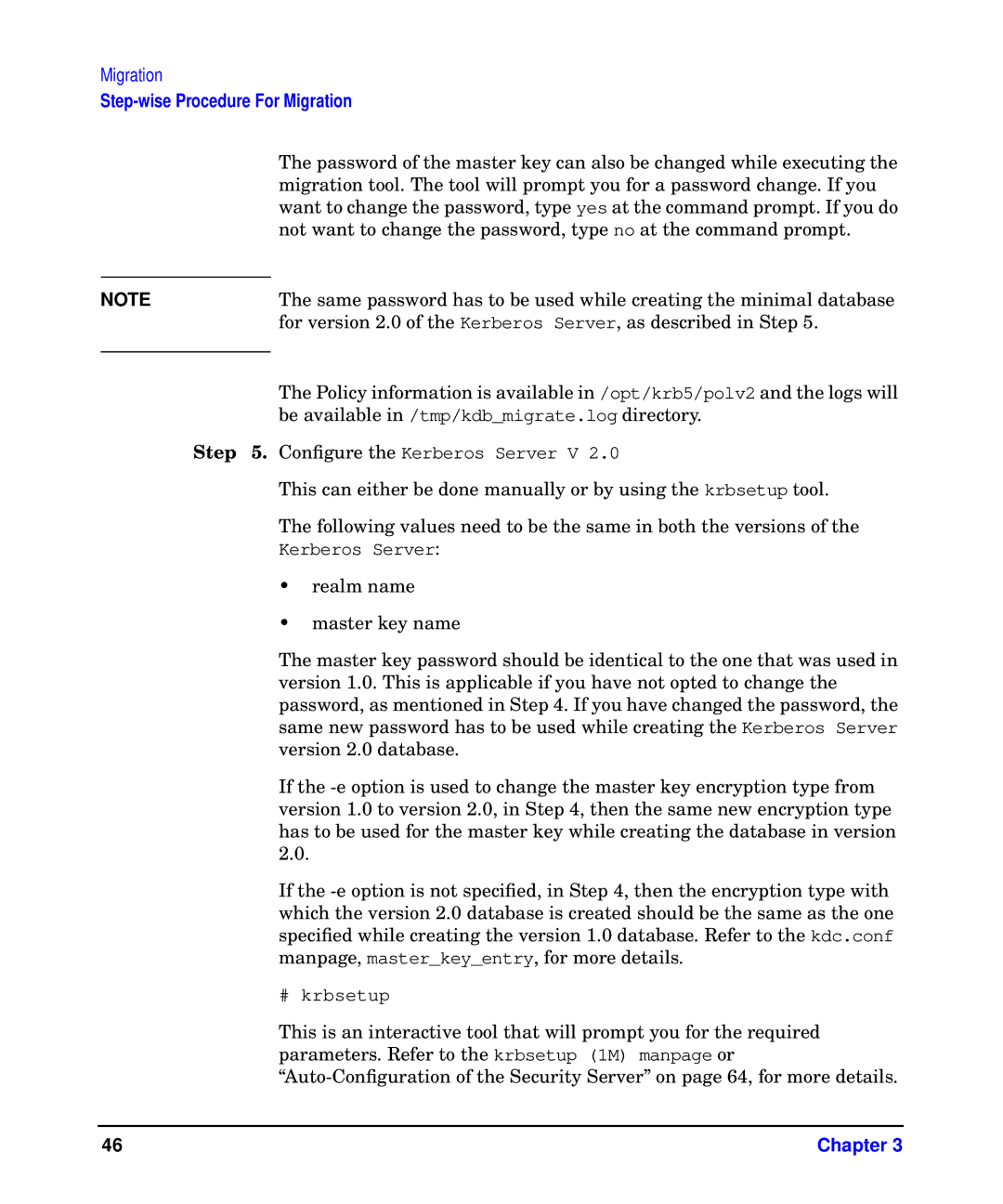Migration
|
| The password of the master key can also be changed while executing the | |
|
| migration tool. The tool will prompt you for a password change. If you | |
|
| want to change the password, type yes at the command prompt. If you do | |
|
| not want to change the password, type no at the command prompt. | |
|
| The same password has to be used while creating the minimal database | |
NOTE |
| ||
|
| for version 2.0 of the Kerberos Server, as described in Step 5. | |
|
| The Policy information is available in /opt/krb5/polv2 and the logs will | |
|
| ||
|
| be available in /tmp/kdb_migrate.log directory. | |
Step | 5. Configure the Kerberos Server V 2.0 | ||
|
| This can either be done manually or by using the krbsetup tool. | |
|
| The following values need to be the same in both the versions of the | |
|
| Kerberos Server: | |
|
| • | realm name |
|
| • | master key name |
The master key password should be identical to the one that was used in version 1.0. This is applicable if you have not opted to change the password, as mentioned in Step 4. If you have changed the password, the same new password has to be used while creating the Kerberos Server version 2.0 database.
If the
If the
# krbsetup
This is an interactive tool that will prompt you for the required parameters. Refer to the krbsetup (1M) manpage or
46 | Chapter 3 |
